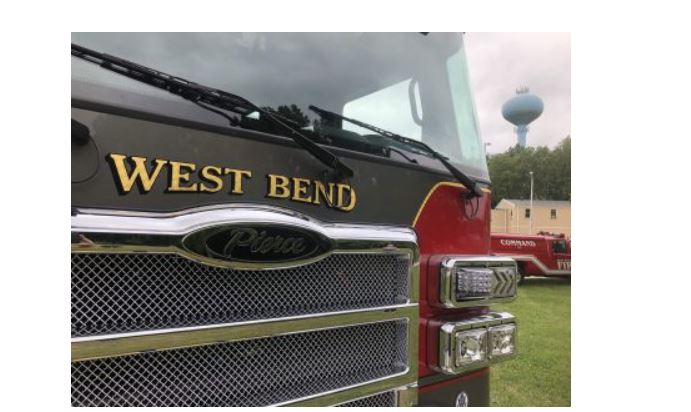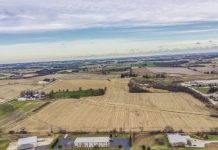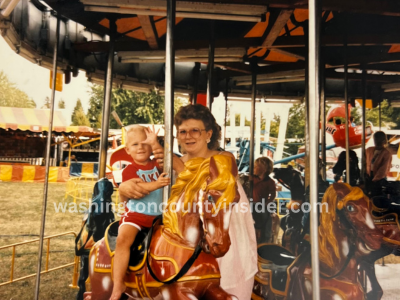Town of Polk, WI – A steady rain fell Sunday morning for the first time during the 5-day run of the Washington County Fair as officials celebrated 25 years at the Fair Park. According to guest speaker Jack Trzebiatowski, the rain was reminiscent of how the park began in 1999 with a record 5 inches of rain the day before opening.

Click HERE to SUBSCRIBE to
FREE local news at
Washington County Insider on YouTube
“We had muddy, wet conditions,” said Trzebiatowski, who served as agriculture educator for the UW-extension in 1999. “That rain provided insight on the need to improve drainage and landscaping.”

For a half hour guests speakers walked through the history of the Fair Park and memories of fairgrounds from the past. Former county board chairman Ken Miller said it was a “community effort,” Agricultural and Industrial Society president Phil Dahlberg remembered seeing the band Styx and county exec Josh Schoemann issued a proclamation.

It was 1857, according to Trzebiatowski, when the Washington County Agricultural Society was formed.
In 1858 the first County Fair was held at the courthouse square in West Bend on Fifth Avenue and Poplar Street.
In 1867 land was purchased on the northeast side of West Bend, now site of Fair Park School.
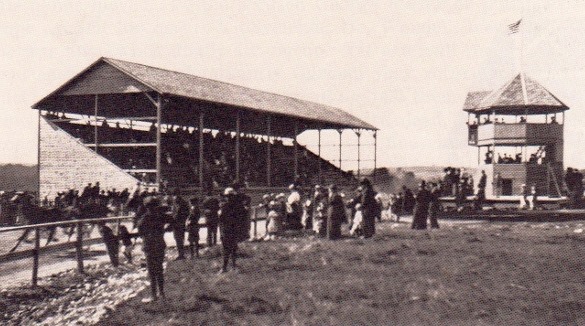
Trzebiatowski recalled the fairgrounds eventually moved in 1937 to the Highway Department grounds in Slinger. Financial difficulties reportedly initiated the fair being turned over to the county.
“In 1978 there was discussion and interest in a new fairgrounds,” said Trzebiatowski. A new location was identified on Hwy E near Slinger. “The side of Heritage Trails County Park, but this did not happen,” he said.
While the Slinger fairgrounds were traditional and cozy and fairgoers had gotten used to the numerous trains passing during the fair, the state started to step in in the 1990s raising concerns by health inspectors about food safety, food stands and livestock facilities.
By 1993 Washington County Development Committee began considering a new fairgrounds, and in 1995 when Washington County hosted Wisconsin Farm Progress Days (now Farm Technology Days), county board chairman Reuben Schmahl began the discussion. “He wanted to use the approximately $120,000 profit for a livestock showring at the new fair,” said Trzebiatowski. “Pledges were made by 4-H, the Farm Bureau, and agriculture businesses and others.”
By 1995 a number of sites were identified including the current location previously owned by Spaeth’s and Bohn’s.
In 1996, after many visioning sessions, land was purchased and by 1977 a master plan prepared and adopted along with necessary funding.

Ken Miller said he was county board chairman when the park finally came to fruition and opened in 1999.

On a history note:
Some local historians have shared thoughts and penned memories about their recollections regarding the advancement of character of the fairgrounds from the Fair Park location to the grounds in Slinger, where the daily trains became part of the fairgrounds.
Lillian Oehlhafen of Kohlsville lived to be 100. She often told stories about her memories of the fair. “I remember when it was held on a 25-acre plot on the northeastern part of the city of West Bend, known as Fair Park.”

Oelhafen attended the fair as a child in the 1920s. She remembers growing up in Kohlsville and how she would go to the fair with her family.
“It was very dusty,” said Oelhafen. “There was always a dark man with a good suit, and he was standing where you entered the fair and he had a whisk broom, and he would offer to brush the men’s suits because it was so dusty.”
Oelhafen said it was normal for families to go to the fair together. “They had rides like a Ferris wheel and merry go round,” she said. “And kids would show their animals.”
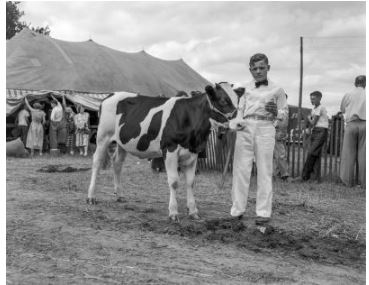
Oelhafen explained how she was 10 miles from West Bend and if kids showed their animals they would walk them to the fair. “They didn’t get trucked, they walked,” she said. “We got a ride – in a Ford car.”
The exhibit tents were a main attraction. For women there were handicraft exhibits like crochet. “I participated in the baking and canning, and I made strawberry and raspberry jelly,” said Oelhafen. “Winners would get blue ribbons.”
Some of the entertainment included country singers at the grandstand but it was the horse races that were really popular. “They were very exciting, and we had to pay separate admission to see those races,” she said.

Oelhafen doesn’t recall carnival games. She said there was a ball toss but the more popular event was a baseball game involving the West Bend Lithia team. “My father Art Moritz was one of the big players,” said Oelhafen. “He was the catcher, and the games always drew a big crowd.”
Oelhafen recalled the fair only ran two or three days. She said her favorite thing was “the recipes.”
“They had a section where women brought their favorite recipes for cooking and baking and you always could get a copy and I really enjoyed that,” she said. “My mother Anna would make the best homemade bread, and kuchen,”
“I’d pick up recipes like a date cake, something that was different,” she said.
Chocolate cake and chicken noodle soup were some of Oelhafen’s specialties. “Yes… those were made with homemade noodles,” she said. “And I killed the chicken all by myself.”
“The chocolate cake was an old family recipe. You had hot water, and you made your own chocolate with coco,” she said.
Fair food hasn’t changed much. Oelhafen said they had cotton candy but Orange Crush, the soda – was her “favorite.”
Dave Bohn also shared old-school recollections of the fair he experienced during the Great Depression.
We didn’t have a lot of extra money, so we didn’t do a lot at the Fair. But I do remember that at the Washington County Fair, they would have sulky horse races.

A sulky race is a single horse that pulls a small cart with a driver who holds the reigns of the harness to guide the horse around the circle track. The cart is tight up against the rear legs of the horse and it was just a two-wheeled cart.
I remember it did look dangerous, although I don’t ever remember seeing a crash. There was a wooden grandstand for people to sit and watch the race. That grandstand was later moved to City Park in 1937. I can remember going to the races with Dad, but I don’t recall much else of the day except getting lost. We probably did look at some of the exhibits, but I don’t really remember too much else as I was pretty little then.
The County Fair was held at the Fair Park School location until 1937 and then it moved to Slinger.
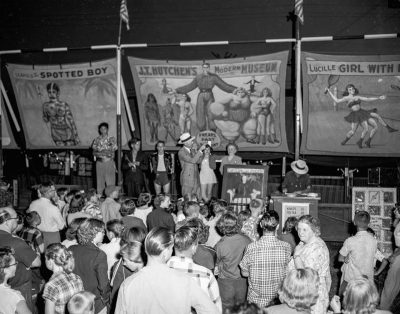
My brother Tom recalled that when it was in Slinger, there were more tents with side shows in them. One time, our cousin decided he wanted to see one of the side shows. We didn’t have a lot of extra money to spend, but he had enough to go in to see a “human attraction.” When he came out, he didn’t feel too good for the rest of the day. I don’t know what to think about those types of attractions, but that’s the way it was in those days.
The Washington County Fair stayed in Slinger until 1999 when it moved again to its current location, south of West Bend on my Great Uncle Albert and Aunt Ida Spaeth’s former farm (located on Hwy P and Pleasant Valley Road).
Albert was my Grandma Bohn’s brother. The farm was passed on to their son, Ray and Leona Spaeth, who were Dad’s cousins and good lifelong friends.
Because of the family connection to the new fairgrounds and because the County Fair was such a big thing during my childhood, my wife Audrey and I donated a bridge going over the pond on the fairgrounds when the grounds were being developed. They named the path by the bridge “Bohn Way.”
Judy Etta, a longtime volunteer with the Washington County Jr. Livestock Auction. She recalled the first livestock auction was in 1970.

According to Etta, “The first Washington County Fair Jr. Livestock Auction, was held July 23, 1970, at the Washington County Fairgrounds in Slinger, Wisconsin. It was held indoors in the Cattle Barn with the Auction Ring consisting of a flatbed trailer and a temporary auction ring.
Members of the first Washington County Fair Meat Animal Sale Committee included Maurice Hovland, Ernst Boehlke, John Kratz, Roy Esser, the first General Chairman of the Committee, and Dick Roembke, from Jackson, who was in charge of preparing facilities.
Roembke was the only surviving member of the original Washington County Fair Jr. Livestock Auction Committee and he remained on the Committee, giving of his time, talent and knowledge for 53 years.
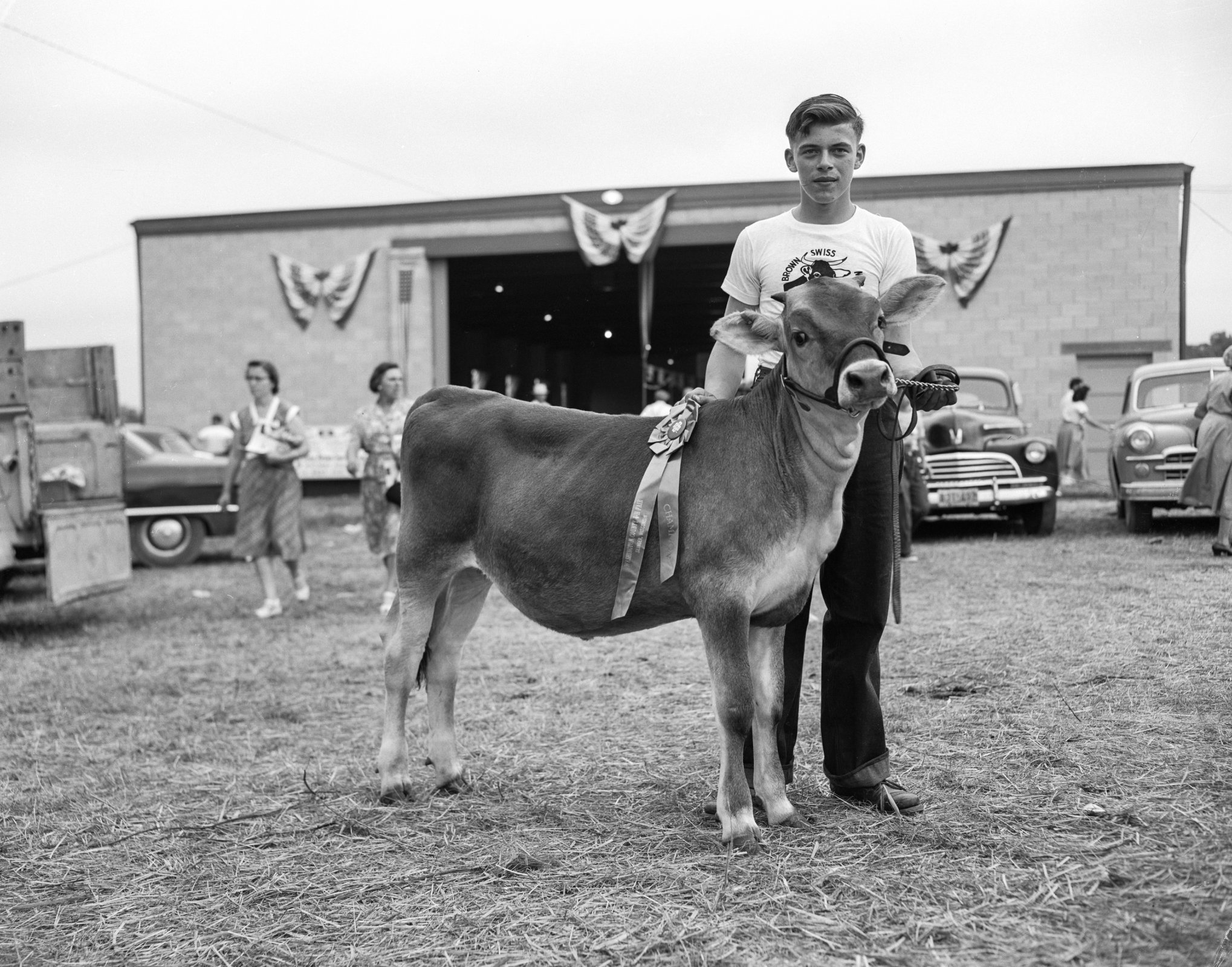
The Committee’s mission was to start an event that would give youth, enrolled in Swine, Beef, and Sheep projects, an opportunity to sell their project animal at an annual sale.
Auctioneers contributing their time through the years include Rollie Bast, Ron Bast, Ernie Kueffner, Pat O’Brien, Jim O’Brien, Wilmer Hilgendorf, Rich Rathke, Linda Boehlke, Dan Ritger, Rudy Hershburger, Pete Didier, Ken Schoebel, Cassie Hansen, Bob Johnson, and others. Ron Bast (son of Rollie Bast) has continued in his father’s footsteps and continues to be an auctioneer at the Washington County Fair Jr. Livestock Auction.
A bit of auction history – in 1970, twelve beef, seven lambs, and 19 hogs were sold. In 2018, 40 beef, 40 lambs, and 50 hogs were sold. In 1970, buyers spent approximately a total of $7,780. In 2018, buyers spent approximately a total of $249,250.
In 2024, there were over 150 buyers that spent a total of $434,516.50 including a bid of $45.50 a pound for a 289-pound pig shown by 10-year-old Tucker Gehl from the Addison Achievers.




